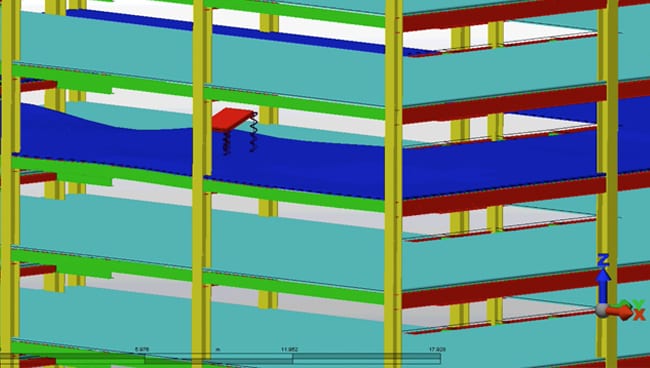Increasingly, noise and vibration emitted into the environment are being defined as contaminants by regulators – similar to chemical or particulate pollutants. As an owner, operator or developer of a project with equipment that can produce noise or vibration, you likely have legal responsibilities to obtain permits or approvals before building or operating the equipment.
Equipment Noise and Vibration Impact
Whether you are managing or are planning to develop an industrial operation, a commercial facility, an office building or a multi-unit residential building, you need to consider the potential impact of future operating equipment such as cooling towers, exhaust fans, emergency generators, electrical transformers, process exhausts or truck loading docks, all of which can be a source of noise and vibration.
Obtaining Environmental Noise or Vibration Permits or Approvals
Obtaining a noise or sound permit or approval to operate usually requires preparing an environmental noise and vibration assessment report. In some jurisdictions, this type of study may be called an Acoustic Assessment Report, a Noise and Vibration Study, a Noise Impact Statement. Although the details of a noise and vibration assessment can vary depending on the type of facility in question, and the regulatory jurisdiction, the process always includes the fundamental elements below
The Fundamentals of Environmental Assessments
- Jurisdictional Regulatory Noise & Vibration Requirements – We establish the regulatory noise and vibration requirements. These requirements not only include the applicable noise and vibration limits, but also the methods that must be followed in measuring, calculating and evaluating the noise and vibration.The noise limits specified by some regulating authorities – such as the World Bank, the Ontario Ministry of Environment and the Alberta Utilities Commission – are not fixed, but are site specific, and vary depending on the background sound, from road traffic or natural sources.
- Vibration & Noise Measurements – We undertake a variety of specialized noise and vibration measurements. If the facility being assessed is existing, we can measure the sound and vibration of the equipment directly. Typically measurements are conducted close to the equipment, and at any potentially impacted sound/vibration sensitive neighbours, or at the property line.If needed for the purposes of establishing the applicable noise and vibration limits, measurements may be conducted of “baseline” conditions with the facility turned off, or prior to construction of the facility.
- Predictive Computer Modeling of Noise & Vibration – When assessments are required for planned facilities, where it is not possible to measure the sound of the equipment directly, predictive computer modelling of the noise and vibration emissions are required.Manufacturer’s published sound data can be used as input, or we can rely on the wealth of measured sound and vibration data we have on file from past projects involving all types of industrial and commercial equipment and vehicles.
- Vibration & Noise Control Measures – Once we know the overall levels of noise and vibration produced by the facility – either through measurement, computational prediction, or both – we can assess the emissions with respect to the governing limits.If excesses over the limits are found, we use computational modelling to rank the sources, identify those contributing to the excess, determine the noise or vibration control measures necessary to achieve compliance with the limits, and prepare clear performance specifications for the control measures.
- Environmental Assessment Reports You Can Understand – Our deliverable is a clear, concise assessment report, written in plain English.Although some regulatory authorities have elaborate content and formatting requirements for noise and vibration assessment reports, we take pride in crafting written reports that can be understood readily by everyone – not just those with specialized knowledge of noise, vibration and acoustics.


Heron’s Hill Master-planned Community

GE Gas Engine Plant

Wafer Fab Parks, Singapore

NPC-300 brings major changes to Ontario’s environmental noise guidelines

What is Floor and Building Vibration?
Need Answers?
Reach out to our acoustical consultants now.
